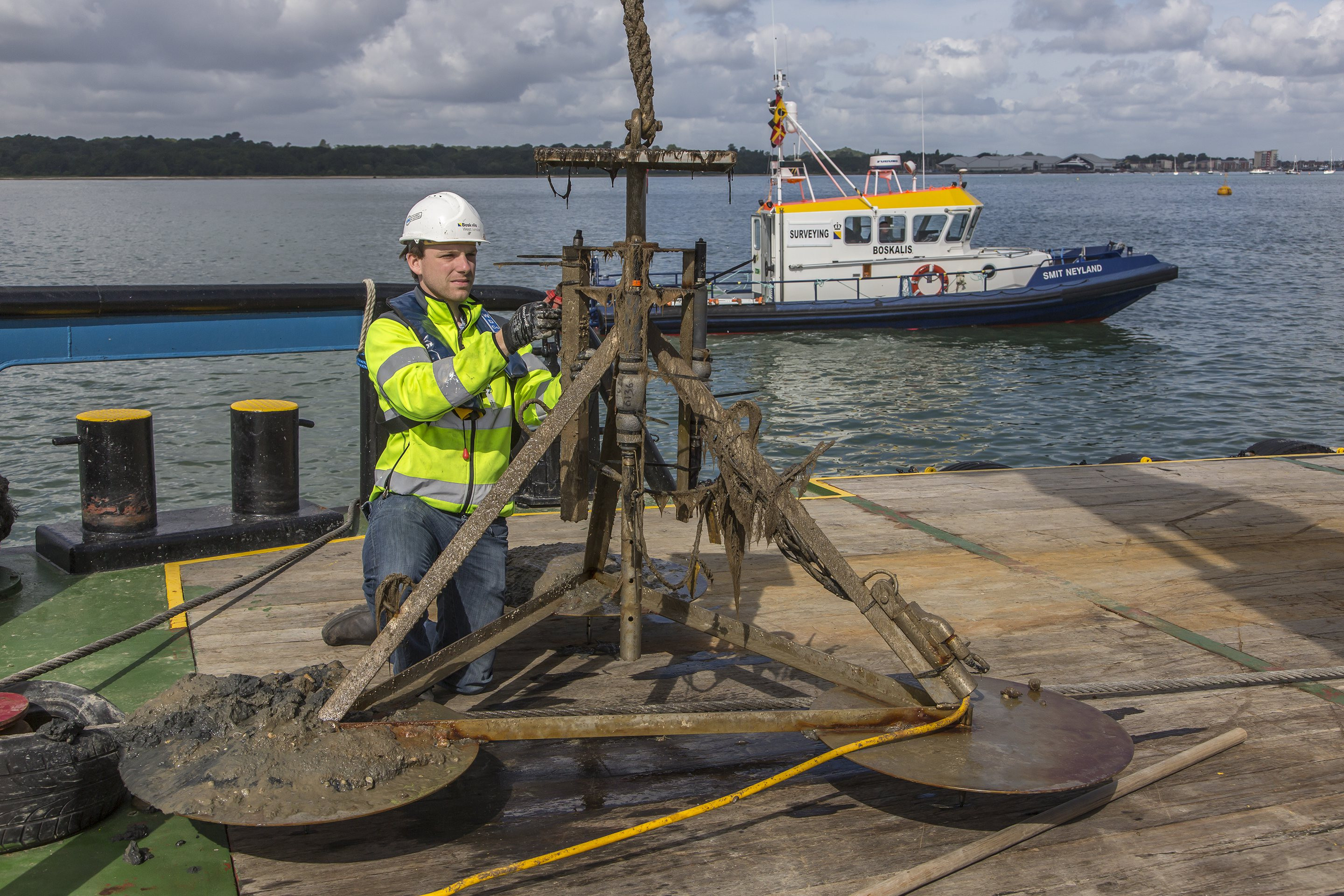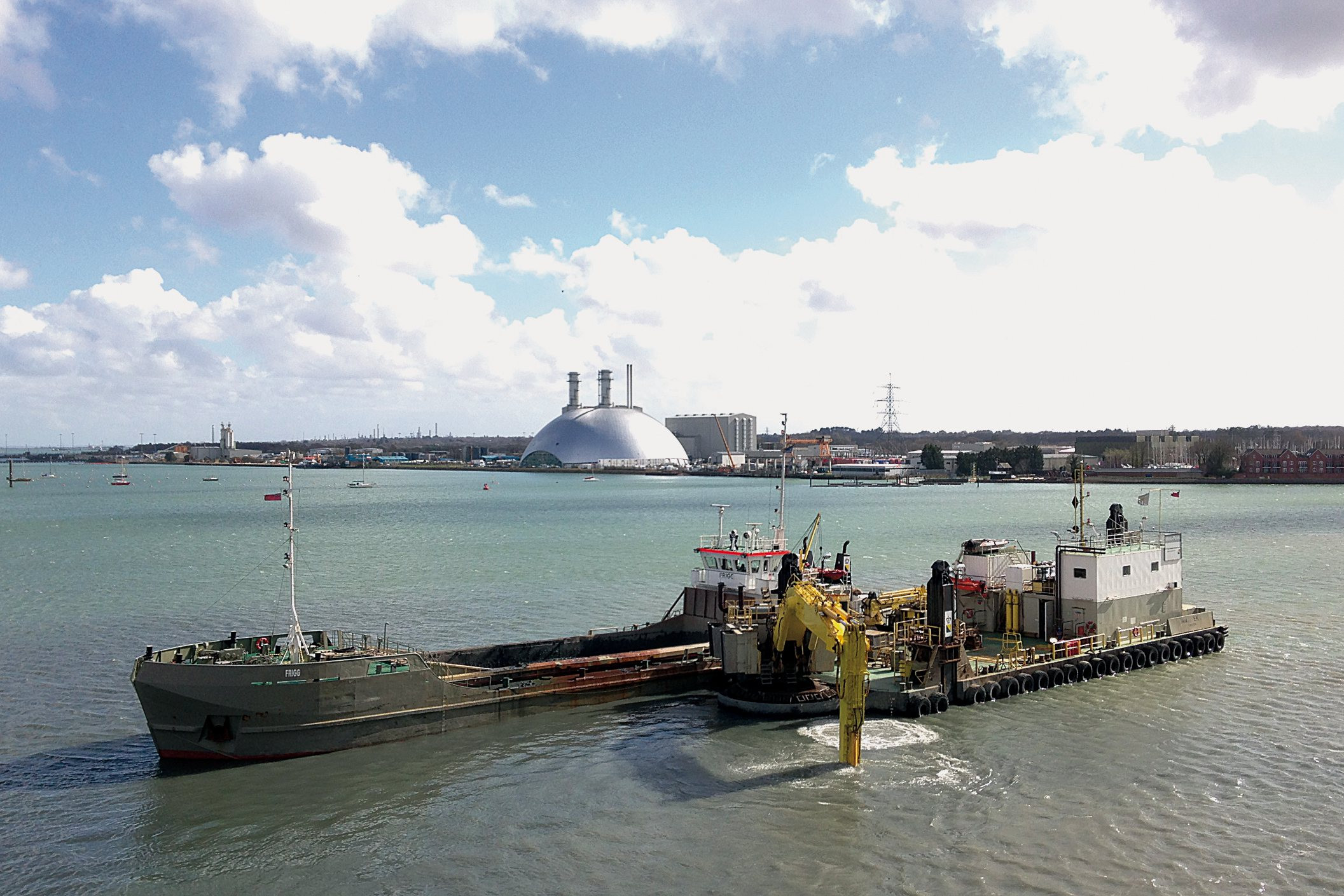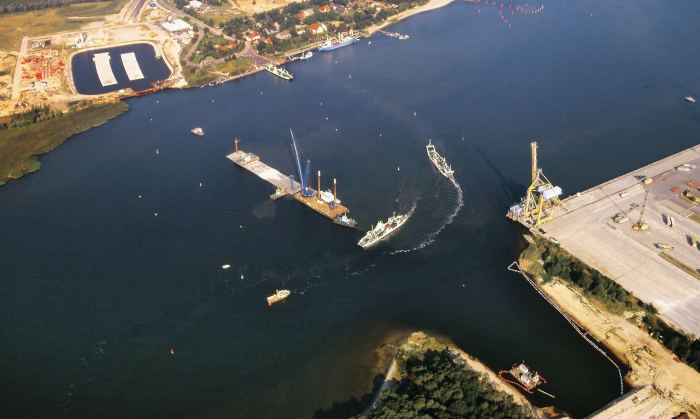Adaptive Monitoring approach proves succesful
Associated British Ports (ABP), which operates 21 ports in the UK, embarked in 2014 on a capital dredging project to significantly increase the draught for large containerships visiting the DPWS Southampton Container Terminal. A crucial part of this project was ensuring that water quality was maintained to the highest level. ABP turned to Boskalis, which used its Building with Nature approach and deployed its pioneering Adaptive Monitoring technique. Sue Simmonite, ABP Development & Environment Manager, Dr Adrian Fewings, the Environment Agency (EA), Fisheries Technical Specialist and Gert-Jan Peters, Project Manager Boskalis Westminster are interviewed about this fascinating project.


Could you tell the readers what you were aiming for in the Southampton Waters project and why Adaptive Monitoring is so important?
Adrian Fewings (EA) comments: “The Adaptive Monitoring strategy was needed to protect the population of Atlantic salmon, migrating to and from the Rivers Test and Itchen, to ensure compliance with the Shellfish Waters Directive and to ensure no deterioration of the waterbody under the Water Framework Directive (WFD). The scheme provides an open and transparent means to ensure the water quality in the potentially impacted zone is maintained to agreed standards.”
Sue Simmonite (ABP) says: “When ABP took the decision to proceed, it was vitally important that we implemented measures to protect the water quality for a range of protected species, including the Atlantic Salmon, in line with the Environment Agency’s requirements. And an important part of the tender procedure was that any contractor should be able to comply with ABP’s water quality Adaptive Management Strategy (AMS), which was developed together with the Environment Agency.”
And the pioneering Adaptive Monitoring technique was a major reason ABP chose Boskalis?
Sue: “Yes. We felt that the most effective way to ensure the water quality was to give the contractor the responsibility for monitoring it. Boskalis had its own in-house, proven system and this gave us a lot of confidence that Boskalis had the ability to operate effectively and maintain the required quality levels.”
In Southampton, Boskalis deployed its own specially designed environmental buoys
Gert-Jan, could you outline Boskalis’ experience with this technique and specifically what it did in Southampton?
“Over the last few years Boskalis has worked on similar projects deploying our Building with Nature approach and Adaptive Monitoring at the Nordstream-pipeline project in Germany and at the Khalifa port development in Abu Dhabi. In Southampton, Boskalis deployed its own specially designed environmental buoys. Initially, the nine buoys were used for three months to measure the baseline values before dredging got underway. During this initial monitoring period we could look at background levels, including the influence of the rivers Hamble, Itchen and Test, as well as the effects of passing vessels.”
And can you describe the buoys in more detail?
“There is a frame fitted under each buoy, which is connected with a 40 meter umbilical cord. Three sensors are attached to the frame — one measuring dissolved oxygen levels, one, turbidity and one is a turbidity sensor capable of measuring a larger range - which acts as a backup turbidity sensor. Boskalis ‘communicates’ with the buoy via a data connection and can make any necessary changes to the settings remotely. At the site office in Southampton the chief surveyor had access to the Adaptive Monitoring system and electronic engineers monitor the network at the head office in the Netherlands. Additionally, they were assisted by an environmental engineer from Boskalis, who interpreted the data. The engineer advised on whether a spike in the results could have been caused by dredging or another reason and they analyzed the information about turbidity levels/dissolved oxygen etc.”
When deploying Adaptive Monitoring, the Environment Agency and ABP received a notification directly if turbidity increased is that correct?
Sue explains: “Yes, the Environment Agency received an email and I received a text message via my mobile telephone directly from the monitoring system. In case of an alarm we could immediately implement mitigating measures and either call a halt to the dredging or move the vessels to another area.”
Gert-Jan adds: “Furthermore, if our project team saw that an alarm could be triggered, it proactively adjusted the dredging plan straight away and left the dredge area until the levels restored themselves or it limited the amount of dredging in each work area. Deploying this system, we were able to manage the dredging process. For example, we limited the overflowing of our trailing suction hopper dredgers and by using the falling rather than the rising tides we limited turbidity within the inner part of Southampton Water, which is the most sensitive area for fish migration. The dredge areas were +/- 20 km long, so we could choose the location where we dredged very carefully.”
For ABP, this technique means that the project is not seasonally restricted. And we have reassurance that the project is of a high environmental standard
And can you tell the readers about the progress?
Gert-Jan: “The dredging campaign got underway in February 2014. Boskalis deployed six trailing suction hopper dredgers working on the ABP project, the smallest hopper, the Causeway, with a 4,500 m3 capacity through to the largest, the 16,000 m3 Prins der Nederlanden. The Manu Pekka backhoe dredger filled the split barges and a hopper went from Southampton port to the dredging disposal area. The works with both the backhoe dredger and the hoppers did not result in any exceeded turbidity levels. And most importantly, our client never had reasons for concern.”
Presumably there have been challenges though given the nature of this project?
Sue laughs: “Yes, ironically there have been occasions when the dredgers were not on site, but there were several alarms! This is likely to be down to algal blooms in the warmer months and on one occasion, the culprit setting off the sensors was identified as a particularly determined crab.”
Gert-Jan adds: “There have been some challenges, indeed. The buoys largely run on solar panels but the exceptionally wet and dark winter meant there was a lack of sunlight, so it was sometimes a struggle to maintain the power supply for the buoys. Therefore, Boskalis implemented a slight change of strategy and used batteries and even put a wind turbine on the top of some of the buoys to improve the power supply. Additionally, when maintenance teams visited the buoys every week they were often facing significant wave heights, which meant work had to stop on some occasions. However, this has not resulted in any delays to the schedule and Boskalis finished on time.”
And how do ABP and the EA view this approach to a project?
Sue: “The operation has gone very smoothly. For ABP, this technique means that the project is not seasonally restricted. We can dredge 24/7, 365 days a year, and we have reassurance that the protected species are not being adversely affected and that the project is of a high environmental standard. Adaptive Monitoring guarantees the best water quality.”
Adrian concludes: “Boskalis carried out the project in an efficient and professional manner. The water quality standards agreed have been maintained throughout the dredging activities, so it is unlikely that impacts have been caused by dredging on the WFD waterbody, designated shellfish waters or to our populations of salmon.”
Finally
New Building with Nature cases are being developed and executed and the supporting knowledge, experience and lessons learned are constantly growing. We keep you posted!
